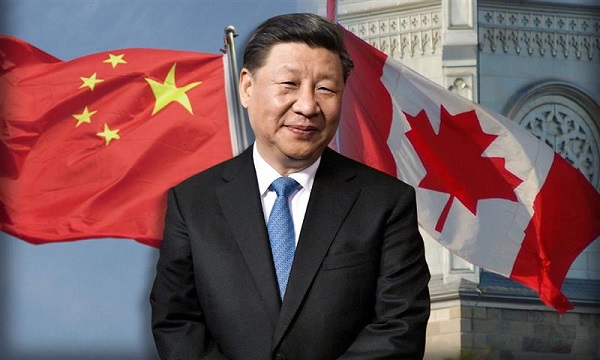Alberta
U.S. tariffs or not, Canada needs to build new oil and gas pipeline space fast
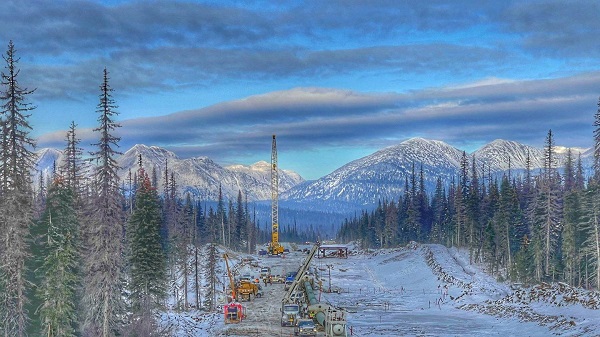
From the Canadian Energy Centre
Expansion work underway takes on greater importance amid trade dispute
Last April, as the frozen landscape began its spring thaw, a 23-kilometre stretch of newly built pipeline started moving natural gas across northwest Alberta.
There was no fanfare when this small extension of TC Energy’s Nova Gas Transmission Limited (NGTL) system went online – adding room for more gas than all the homes in Calgary use every day.
It’s part of the ongoing expansion of the NGTL system, which connects natural gas from British Columbia and Alberta to the vast TC Energy network. In fact, one in every 10 molecules of natural gas moved across North America touches NGTL.
With new uncertainty emerging from Canada’s biggest oil and gas customer – the United States – there is a rallying cry to get new major pipelines built to reach across Canada and to wider markets.
Canada’s Natural Resources Minister Jonathan Wilkinson recently said the country should consider building a new west-east oil pipeline following U.S. President Donald Trump’s threat of tariffs, calling the current lack of cross-country pipelines a “vulnerability,” CBC reported.
“I think we need to reflect on that,” Wilkinson said. “That creates some degree of uncertainty. I think, in that context, we will as a country want to have some conversations about infrastructure that provides greater security for us.”
Many industry experts see the threat to Canada’s economy as a wake-up call for national competitiveness, arguing to keep up the momentum following the long-awaited completion of two massive pipelines across British Columbia over the last 18 months. Both of which took more than a decade to build amidst political turmoil, regulatory hurdles, activist opposition and huge cost overruns.
On May 1, 2024, the Trans Mountain pipeline expansion (TMX) started delivering crude oil to the West Coast, providing a much-needed outlet for Alberta’s growing oil production.
Several months before that, TC Energy finished work on the 670-kilometre Coastal Gaslink pipeline, which provides the first direct path for Canadian natural gas to reach international markets when the LNG Canada export terminal in Kitimat begins operating later this year.
TMX and Coastal GasLink provide enormous benefits for the Canadian economy, but neither are sufficient to meet the long-term growth of oil and gas production in Western Canada.
More oil pipeline capacity needed soon
TMX added 590,000 barrels per day of pipeline capacity, nearly tripling the volume of crude reaching the West Coast where it can be shipped to international markets.
In less than a year, the extra capacity has enabled Canadian oil production to reach all-time highs of more than five million barrels per day.
More oil reaching tidewater has also shrunk the traditional discount on Alberta’s heavy oil, generating an extra $10 billion in revenues, while crude oil exports to Asia have surged from $49 million in 2023 to $3.6 billion in 2024, according to ATB analyst Mark Parsons.
 With oil production continuing to grow, the need for more pipeline space could return as soon as next year, according to analysts and major pipeline operators.
With oil production continuing to grow, the need for more pipeline space could return as soon as next year, according to analysts and major pipeline operators.
Even shortly after TMX began operation, S&P Global analysts Celina Hwang and Kevin Birn warned that “by early 2026, we forecast the need for further export capacity to ensure that the system remains balanced on pipeline economics.”
Pipeline owners are hoping to get ahead of another oil glut, with plans to expand existing systems already underway.
Trans Mountain vice-president Jason Balasch told Reuters the company is looking at projects that could add up to 300,000 barrels per day (bpd) of capacity within the next five years.
Meanwhile, Canada’s biggest oil pipeline company is working with Alberta’s government and other customers to expand its major export pipelines as part of the province’s plan to double crude production in the coming years.
Enbridge expects it can add as much as 300,000 bpd of capacity out of Western Canada by 2028 through optimization of its Mainline system and U.S. market access pipelines.
Enbridge spokesperson Gina Sutherland said the company can add capacity in a number of ways including system optimizations and the use of so-called drag reducing agents, which allow more fluid to flow by reducing turbulence.
LNG and electricity drive strong demand for natural gas
Growing global demand for energy also presents enormous opportunities for Canada’s natural gas industry, which also requires new transportation infrastructure to keep pace with demand at home and abroad.
The first phase of the LNG Canada export terminal is expected to begin shipping 1.8 billion cubic feet of gas per day (Bcf/d) later this year, spurring the first big step in an expected 30 per cent increase in gas production in Western Canada over the next decade.
With additional LNG projects in development and demand increasing, the spiderweb of pipes that gathers Alberta and B.C.’s abundant gas supplies need to continue to grow.
TC Energy CEO Francois Poirier is “very bullish” about the prosect of building a second phase of the recently completed Coastal GasLink pipeline connecting natural gas in northeast B.C. to LNG terminals on the coast at Kitimat.
The company is also continuously expanding NGTL, which transports about 80 per cent of Western Canada’s production, with more than $3 billion in growth projects planned by 2030 to add another 1 Bcf/d of capacity.
Meanwhile Enbridge sees about $7 billion in future growth opportunities on its natural gas system in British Columbia.
In addition to burgeoning LNG exports from Canada, the U.S. and Mexico, TC Energy sees huge potential for gas to continue replacing coal-fired electricity generation, especially as a boom in power-hunger data centres unfolds.
With such strong prospects for North America’s highly integrated energy system, Poirier recently argued in the Wall Street Journal that leaders should be focused on finding common ground for energy in the current trade dispute.
“Our collective strength on energy provides a chance to expand our economies, advance national security and reduce global emissions,“ he wrote in a Feb. 3 OpEd.
“By working together across North America and supporting the free flow of energy throughout the continent, we can achieve energy security, affordability and reliability more effectively than any country could achieve on its own.”
2025 Federal Election
Next federal government should recognize Alberta’s important role in the federation
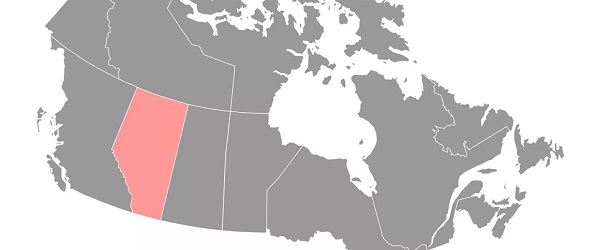
From the Fraser Institute
By Tegan Hill
With the tariff war continuing and the federal election underway, Canadians should understand what the last federal government seemingly did not—a strong Alberta makes for a stronger Canada.
And yet, current federal policies disproportionately and negatively impact the province. The list includes Bill C-69 (which imposes complex, uncertain and onerous review requirements on major energy projects), Bill C-48 (which bans large oil tankers off British Columbia’s northern coast and limits access to Asian markets), an arbitrary cap on oil and gas emissions, numerous other “net-zero” targets, and so on.
Meanwhile, Albertans contribute significantly more to federal revenues and national programs than they receive back in spending on transfers and programs including the Canada Pension Plan (CPP) because Alberta has relatively high rates of employment, higher average incomes and a younger population.
For instance, since 1976 Alberta’s employment rate (the number of employed people as a share of the population 15 years of age and over) has averaged 67.4 per cent compared to 59.7 per cent in the rest of Canada, and annual market income (including employment and investment income) has exceeded that in the other provinces by $10,918 (on average).
As a result, Alberta’s total net contribution to federal finances (total federal taxes and payments paid by Albertans minus federal money spent or transferred to Albertans) was $244.6 billion from 2007 to 2022—more than five times as much as the net contribution from British Columbians or Ontarians. That’s a massive outsized contribution given Alberta’s population, which is smaller than B.C. and much smaller than Ontario.
Albertans’ net contribution to the CPP is particularly significant. From 1981 to 2022, Alberta workers contributed 14.4 per cent (on average) of total CPP payments paid to retirees in Canada while retirees in the province received only 10.0 per cent of the payments. Albertans made a cumulative net contribution to the CPP (the difference between total CPP contributions made by Albertans and CPP benefits paid to retirees in Alberta) of $53.6 billion over the period—approximately six times greater than the net contribution of B.C., the only other net contributing province to the CPP. Indeed, only two of the nine provinces that participate in the CPP contribute more in payroll taxes to the program than their residents receive back in benefits.
So what would happen if Alberta withdrew from the CPP?
For starters, the basic CPP contribution rate of 9.9 per cent (typically deducted from our paycheques) for Canadians outside Alberta (excluding Quebec) would have to increase for the program to remain sustainable. For a new standalone plan in Alberta, the rate would likely be lower, with estimates ranging from 5.85 per cent to 8.2 per cent. In other words, based on these estimates, if Alberta withdrew from the CPP, Alberta workers could receive the same retirement benefits but at a lower cost (i.e. lower payroll tax) than other Canadians while the payroll tax would have to increase for the rest of the country while the benefits remained the same.
Finally, despite any claims to the contrary, according to Statistics Canada, Alberta’s demographic advantage, which fuels its outsized contribution to the CPP, will only widen in the years ahead. Alberta will likely maintain relatively high employment rates and continue to welcome workers from across Canada and around the world. And considering Alberta recorded the highest average inflation-adjusted economic growth in Canada since 1981, with Albertans’ inflation-adjusted market income exceeding the average of the other provinces every year since 1971, Albertans will likely continue to pay an outsized portion for the CPP. Of course, the idea for Alberta to withdraw from the CPP and create its own provincial plan isn’t new. In 2001, several notable public figures, including Stephen Harper, wrote the famous Alberta “firewall” letter suggesting the province should take control of its future after being marginalized by the federal government.
The next federal government—whoever that may be—should understand Alberta’s crucial role in the federation. For a stronger Canada, especially during uncertain times, Ottawa should support a strong Alberta including its energy industry.
Alberta
Province announces plans for nine new ‘urgent care centres’ – redirecting 200,000 hospital visits

Expanding urgent care across Alberta
If passed, Budget 2025 includes $17 million in planning funds to support the development of urgent care facilities across the province.
As Alberta’s population grows, so does the demand for health care. In response, the government is making significant investments to ensure every Albertan has access to high-quality care close to home. Currently, more than 35 per cent of emergency department visits are for non-life-threatening conditions that could be treated at urgent care centres. By expanding these centres, Alberta’s government is enhancing the health care system and improving access to timely care.
If passed, Budget 2025 includes $15 million to support plans for eight new urgent care centres and an additional $2 million in planning funds for an integrated primary and urgent care facility in Airdrie. These investments will help redirect up to 200,000 lower-acuity emergency department visits annually, freeing up capacity for life-threatening cases, reducing wait times and improving access to care for Albertans.
“More people are choosing to call Alberta home, which is why we are taking action to build capacity across the health care system. Urgent care centres help bridge the gap between primary care and emergency departments, providing timely care for non-life-threatening conditions.”
“Our team at Infrastructure is fully committed to leading the important task of planning these eight new urgent care facilities across the province. Investments into facilities like these help strengthen our communities by alleviating strains on emergency departments and enhance access to care. I am looking forward to the important work ahead.”
The locations for the eight new urgent care centres were selected based on current and projected increases in demand for lower-acuity care at emergency departments. The new facilities will be in west Edmonton, south Edmonton, Westview (Stony Plain/Spruce Grove), east Calgary, Lethbridge, Medicine Hat, Cold Lake and Fort McMurray.
“Too many Albertans, especially those living in rural communities, are travelling significant distances to receive care. Advancing plans for new urgent care centres will build capacity across the health care system.”
“Additional urgent care centres across Alberta will give Albertans more options for accessing the right level of care when it’s needed. This is a necessary and substantial investment that will eventually ease some of the pressures on our emergency departments.”
The remaining $2 million will support planning for One Health Airdrie’s integrated primary and urgent care facility. The operating model, approved last fall, will see One Health Airdrie as the primary care operator, while urgent care services will be publicly funded and operated by a provider selected through a competitive process.
“Our new Airdrie facility, offering integrated primary and urgent care, will provide same-day access to approximately 30,000 primary care patients and increase urgent care capacity by around 200 per cent, benefiting the entire community and surrounding areas. We are very excited.”
Alberta’s government will continue to make smart, strategic investments in health facilities to support the delivery of publicly funded health programs and services to ensure Albertans have access to the care they need, when and where they need it.
Budget 2025 is meeting the challenge faced by Alberta with continued investments in education and health, lower taxes for families and a focus on the economy.
Quick facts
- The $2 million in planning funds for One Health Airdrie are part of a total $24-million investment to advance planning on several health capital initiatives across the province through Budget 2025.
- Alberta’s population is growing, and visits to emergency departments are projected to increase by 27 per cent by 2038.
- Last year, Alberta’s government provided $8.4 million for renovations to the existing Airdrie Community Health Centre.
Related information
-
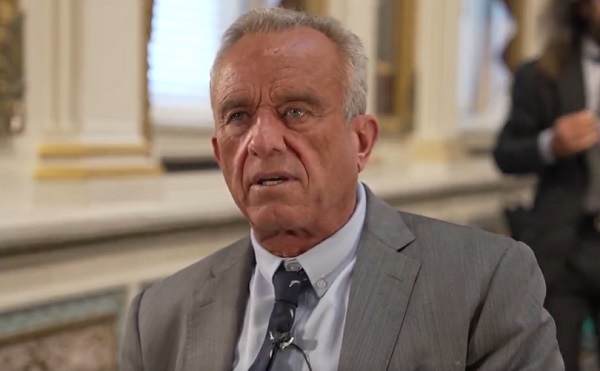
 Health2 days ago
Health2 days agoRFK Jr. says ‘everything is going to change’ with CDC vaccine policy in Michael Knowles interview
-

 Business2 days ago
Business2 days agoLabor Department cancels “America Last” spending spree spanning five continents
-

 Addictions2 days ago
Addictions2 days agoThere’s No Such Thing as a “Safer Supply” of Drugs
-
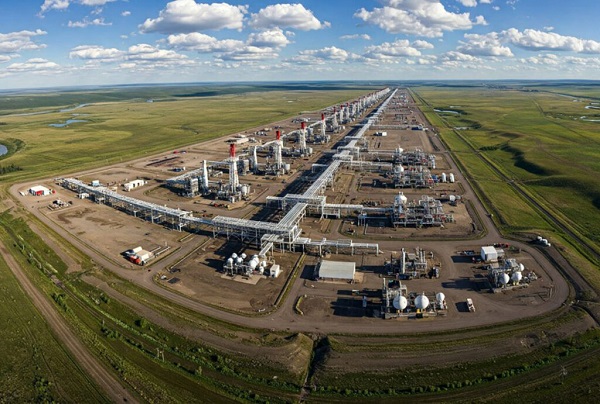
 Economy1 day ago
Economy1 day agoClearing the Path: Why Canada Needs Energy Corridors to Compete
-

 2025 Federal Election2 days ago
2025 Federal Election2 days agoNext federal government should recognize Alberta’s important role in the federation
-

 2025 Federal Election12 hours ago
2025 Federal Election12 hours ago2025 Federal Election Interference from China! Carney Pressed to Remove Liberal MP Over CCP Bounty Remark
-

 Uncategorized11 hours ago
Uncategorized11 hours agoPoilievre on 2025 Election Interference – Carney sill hasn’t fired Liberal MP in Chinese election interference scandal
-

 2025 Federal Election2 days ago
2025 Federal Election2 days agoCanadian Banks Tied to Chinese Fentanyl Laundering Risk U.S. Treasury Sanctions After Cartel Terror Designation










